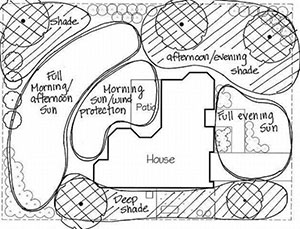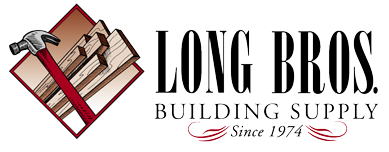April is the perfect time of year for considering how you might redesign your landscape or simply make the few changes you have been wanting to make to freshen up the yard.
From sprinklers and soil, to bark dust and river rock, we have it in stock for you!
 If you are planning a big overhaul, it may benefit you to draw out your space. The amount and length of sun and shade exposure in each area of your yard are different. These areas are called Microclimates. They are usually broken into one of four categories: full sun, partial shade, shade, or deep shade. Before selecting plants, rock features and where the deck will go within your design, consider what is happening in your yard throughout the day.
If you are planning a big overhaul, it may benefit you to draw out your space. The amount and length of sun and shade exposure in each area of your yard are different. These areas are called Microclimates. They are usually broken into one of four categories: full sun, partial shade, shade, or deep shade. Before selecting plants, rock features and where the deck will go within your design, consider what is happening in your yard throughout the day.
Consider the topography of your space as you plan; how does water drain? Ideal landscape design will promote water movement away from your home towards other areas of your yard. Draw out your sprinkler system or drip system based on plant and sod placement.
Who will be using your yard and how will they be using it? Pets and children (or even backyard chickens) will require different features than a yard with outdoor entertaining as your emphasis. You can create different spaces for different uses in your design with plantings and hardscapes. Walkways can be used to move people from one area to another.
Consider the maintenance of your space. How much time will you truly have to put into it? If you don’t like the idea of lawn maintenance, consider more bark, rock features and/or a deck! With global warming, our summers only seem to get hotter. If you are creating your landscaping, be sure to include sprinklers so your yard can look great without as much maintenance from you.
Determine how your plants will function in your landscape. Plants can be used in a number of ways; they can provide you with fresh and delicious fruits and vegetables, beautiful scenery, lovely aromas, and much more. Plants can be used as barriers to define areas within your landscape as well as identify where your landscape ends. You can use plants to create physical barriers in your landscape by blocking both views and access to an area. If you want to keep your views open, but maintain some barriers, low growing plants can be used to create implied barriers, blocking access but not the view.
Sketch out your plans and bring them in. We can help you find the right sprinklers, soil, bark dust, fertilizer, potting soil or rock types for your plans.
